#emballonuridae
Explore tagged Tumblr posts
Text

Northern Ghost Bat (Diclidurus albus), family Emballonuridae, found in Central and South America
photograph by Michael Autumn
#bat#ghost bat#diclidurus#emballonuridae#chiroptera#mammal#animals#nature#central america#south america
1K notes
·
View notes
Text

Lesser Ghost Bat, photographed by Jeniffer Bajaña, (source)
#Lesser Ghost Bat#diclidurus scutatus#bat#bats#cute bats#daily bats#bats of south america#batposting#chiroptera#emballonuridae
325 notes
·
View notes
Text
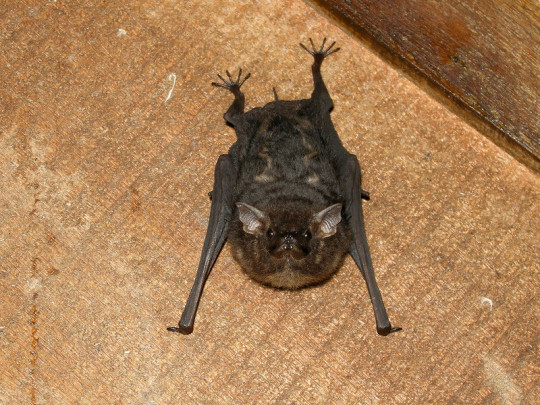
A sac-winged bat (Saccopteryx sp.) in Costa Rica
by Frank Vassen
#sac winged bat#bats#saccopteryx#Emballonuridae#chiroptera#mammalia#chordata#wildlife: costa rica#wildlife: central america
125 notes
·
View notes
Text

Greater sac-winged bat (Saccopteryx bilineata)
TK
8 notes
·
View notes
Text
Occurrence of Pipistrellus tenuis in Goalpara, Assam, India

Abstract
A recent survey identified a colony of Pipistrellus tenuis (n = 5) in Kanyakuchi Pahar village (26°00’32.8″N 90°53’29.0″E), a rural remote site situated at Goalpara district of Assam. This species, commonly known as the Least Pipistrelle, was previously reported by Hinton and Lindsay (1926), Sinha (1999), Ghosh (2008), Saikia et al. (2011) and Boro et al. (2018) from different parts of Assam. The Goalpara district of western Assam is encircled by the foothills of Meghalaya to the South and the Brahmaputra River to the North possesses a variety of flora and fauna due to the dense foliage of the high forest canopy. The climatic condition of the region along with its topography favours roosting of bat population. The distribution of the bat species P. tenuis in the surveyed area has not been previously recorded. For the purpose of taxonomic identification, morphometric parameters (external and cranio-dental measurements) were compared to standard literature by Bates and Harrison (1997). Captured bat specimens (n=3) were examined at the ZSI (Zoological Survey of India), NERC-Shillong, Meghalaya. The recorded mean body weight of captured specimens was 2.61g ± 0.160 (S.D) and the mean forearm length (FA) was 27.39mm ± 0.165 (S.D). This manuscript validates sightings of this bat species at the study location, compares its morphometric and cranio-dental traits to standard literature (Bates and Harrison, 1997) for identification, discusses its distribution as well as its ecological importance.

Introduction
Bats are the only mammals that can fly for long periods of time, making them the second-largest order of mammals with over 1,400 different species. The two suborders of bats, Microchiroptera (echolocating bats) and Megachiroptera (Old World bats) make up the taxonomic group Chiroptera. 127 species of bats from India were listed by Talmale and Saikia (2018) and were categorised into 41 genera and 9 families. About 39 different bat species, divided into 16 genera, are found in Assam, including 34 Microchiropteran species and 5 Megachiropteran species (fruit bats) (Ali, 2022). The Himalaya and Indo-Burma Biodiversity Hotspot, which includes Northeast India, contains 74 species of the 127 species of bats that are known to exist in India (Saikia, 2019). There are nine families in the order Chiroptera that are represented in India: Pteropodidae, Megadermatidae, Hipposideridae, Rhinolophidae, Emballonuridae, Rhinopomatidae, Molossidae, Vespertilionidae, and Miniopteridae.
With 62 species, the family Vespertilionidae (commonly known as evening bats) is the most diverse and numerous family of bats found in India (Saikia 2019; Ali, 2022). The tiniest pipistrelle found in the Indian subcontinent belongs to the Vespertilionidae family and is known as the least pipistrelle (Figs. 2 and 3). The genus Pipistrellus has 51 species worldwide, including 12 species being found on the Indian subcontinent (Koopman, 1993). It's prevalent over the majority of Southeast Asia, Southeast China, and South Asia (Simmons, 2005). This species is found in Pakistan, Bangladesh, Afghanistan, India, Nepal, and Sri Lanka (Molur et al., 2002; Das, 2003; Vanitharanie, 2006; Korad, 2007). This bat occasionally shares a roost with Indian Pipistrelles, but they don't interact with one another. They frequently form colonies of 1 to 25 individuals and are present in both woodlands and populated places and often prefer living in close proximity to human population. They build their nests in trees, leaf canopies, the ceilings or walls of buildings, and abandoned homes (Francis et al., 2010). Seasonal variations in the species' diet are evident.
It consumes a variety of insects and beetles during the monsoon and summer, and termites, cockroaches, wingless ants, and moths during the winter (Hamidullah et al., 2019).
P. tenuis are categorised as insectivorous bats in terms of preferred diet and feeding habits. A typical pipistrelle bat can often consume one-third of its body weight in insects per night, significantly lowering the number of insects. They devour a lot of insects at night, which costs the US $3.7 billion in pest control every year. It has been shown, according to the Smithsonian Tropical Research Institute and the University of Michigan that places with insectivorous bat populations greatly reduce the amount of insects and plant damage (Kalka et al., 2008). Recent study on the reproductive activity of the P. tenuis species indicate that there are two peaks between the months of July and August, and one between February and March. The greatest abundance of prey occurred during each of these times. In China and India, pregnant and nursing females have been spotted at all times of the year, proving that reproduction is possible all year long (Wilson and Mittermeier, 2019). Due to their nocturnal lifestyle and ecological diversity, bats are a fascinating group of animals as well as a difficult species to research.
A number of researchers from the Zoological Survey of India and other institutions have made significant contributions to the study of Indian bat taxonomy and geographic distribution in the post-independence era. Some of the most important revisions of the geographical range and taxonomy of Indian bats include Brosset (1962abc, 1963); Hill and Corbett (1992); Bhat and Kock (1994); Sinha (1970, 1973, 1999); Bates & Harrison (1997); Pradhan (2008); Das (2003); Csorba et al. (2003); Ramarkishna et al. (2003); Ghosh (2005, 2008); Srinivasulu (2001, 2006); Alfred, (2006). A monograph by Bates & Harrison (1997) listed 28 species of bats from Assam. Recently, there are only a few significant works on the study of different species of bats in the state of Assam by Sinha (1999), Ghosh (2008) and Boro et al. (2013; 2015; 2018), Ali (2010; 2022), Rahman and Choudhury (2017), Saikia et al. (2011; 2018; 2019; 2021).
Furthermore, little is known about the distribution and taxonomic status of bats, notably microchiroptera, in the Assam region. This article aims to investigate the distribution and current status of the Pipistrellus genus in Assam's Goalpara district. This paper on Pipistrellus tenuis occurence is the first at the study site (Fig. 1) and is based on measurements of morphometric features in comparison to current standard literature (Bates and Harrison, 1997).
Source : Occurrence of Pipistrellus tenuis in Goalpara, Assam, India | InformativeBD
1 note
·
View note
Text

Taphozous australis | John Gould (1804-1881) | The mammals of Australia. v.3 (1863) | Flickr (Biodiversity Heritage Library)
0 notes
Photo



Western sheath-tailed bat (Paremballonura tiavato)
First described in 2006, this species is endemic to Madagascar. They usually roost in small colonies of less than 20 individuals and they are usually found roosting in the entrances to narrow caves and overhangs on rocks that receive weak sunlight. Western sheath-tailed bats are believed to be dependent on forests but have been observed resting on buildings at night. The species is threatened by habitat loss due to slash-and-burn agriculture and from charcoal collecting and logging. Other potential threats come from the disturbance of roosting caves from tourists, fire, or mining.
Classification Animalia - Chordata - Mammalia - Eutheria - Boreoeutheria - Laurasiatheria - Scrotifera - Chiroptera - Microchiroptera - Emballonuroidea - Emballonuridae - Emballonurinae - Paremballonura - P. tiavato
Images: [x] [x] [x] Source: [x]
#western sheath tailed bat#sheath tailed bat#bat#paremballonura tiavato#paremballonura#emballonurinae#emballonuridae#Emballonuroidea#microchiroptera#chiroptera#scrotifera#laurasiatheria#boreoeutheria#eutheria#least concern#mammalia#tetrapoda#vertebrata#chordata#species feature
4 notes
·
View notes
Photo

Small sketchs with a ballpen. I used this post for ref : https://speculative-evolution.tumblr.com/post/165558658017/koryos-know-your-bats-emballonuridae-family
1 note
·
View note
Photo
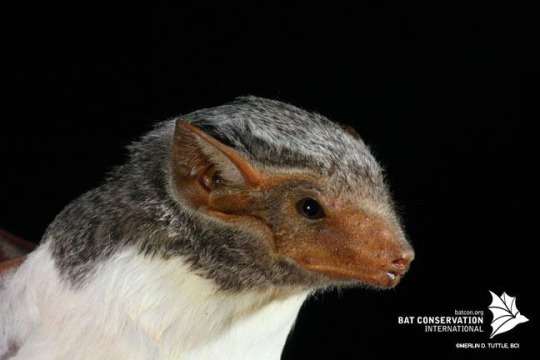
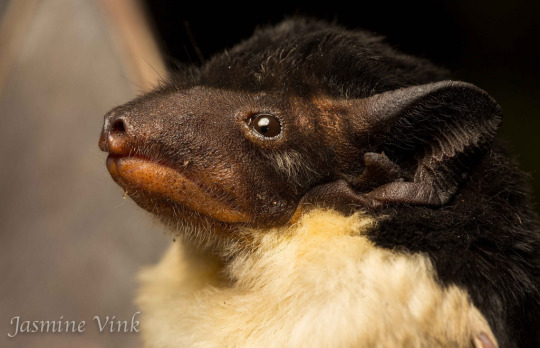
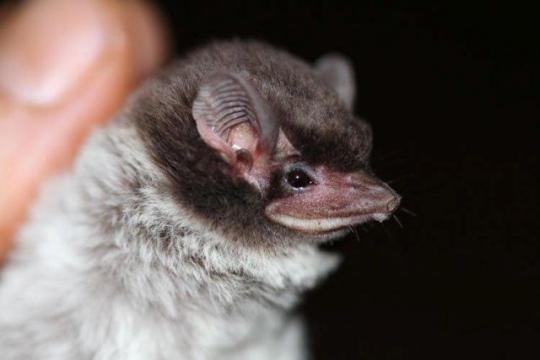
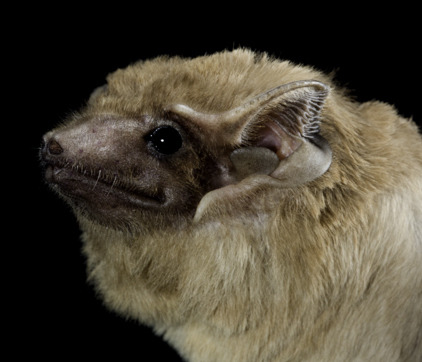


KNOW YOUR BATS: Emballonuridae family
Emballonuridae is a family of bats commonly known as sheath-tailed or sac-winged bats. I’m surprised these bats aren’t better known, because they have very uniquely appealing little faces. I think it’s the perpetually upturned nose.

They also have a stunning variety of colors, from the pure-white northern ghost bat to the dark chocolate of the Hill’s sheath-tailed bat.
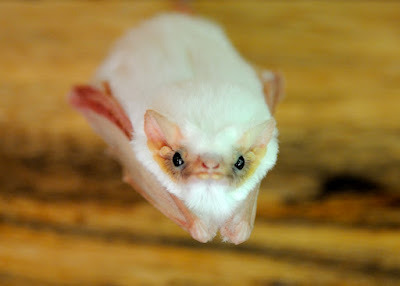
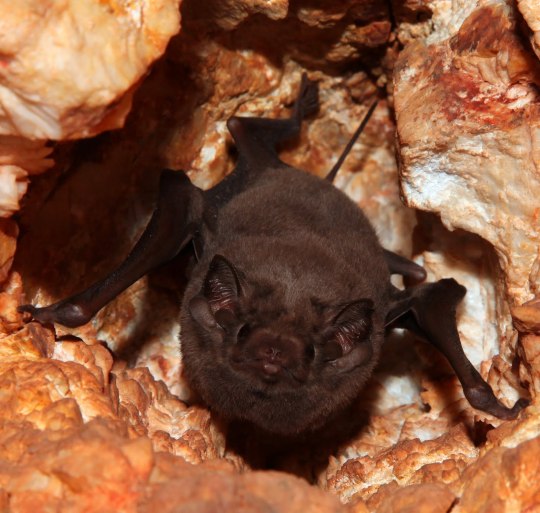
Among them are some excellent camoflaugers, such as the proboscis bat, which looks like a bit of lichen or damaged bark on a tree.
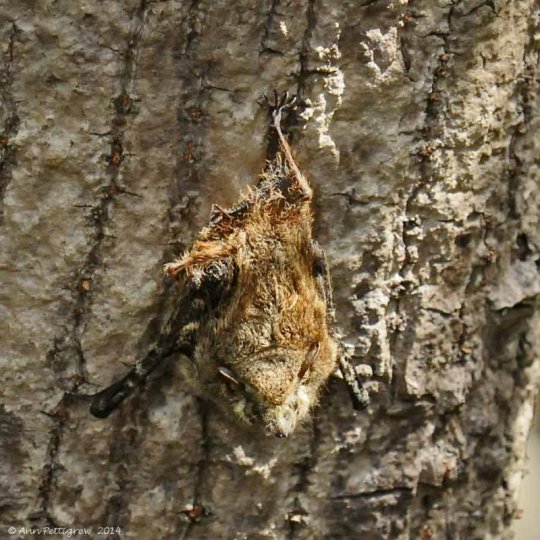
In fact, many species in Emballonuridae roost on the trunks and branches of trees, in broad daylight, depending on their camouflage to keep them safe. They like to do it in neat little lines.

Sometimes they also stack.

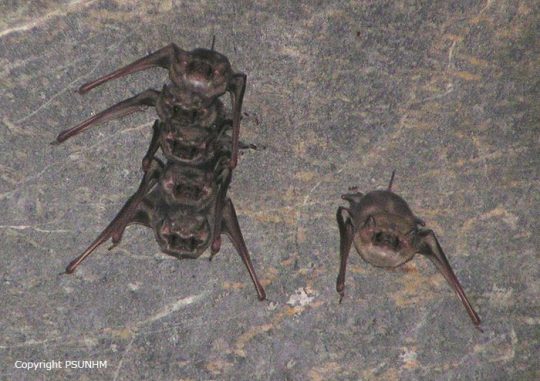
You may have noticed their short little tailed. They’re sometimes called sheath-tailed bats because these tails protrude out of the membrane between their back legs, which can be pulled up to “sheath” the tail. Here’s a video if you don’t quite understand what I mean.
As I mentioned earlier, they’re also called sac-winged bats. This is because they have special pouches near their wrists designed to release pheromones into the air when they flap their wings. Below is a close up of the pouch, closed and then opened.

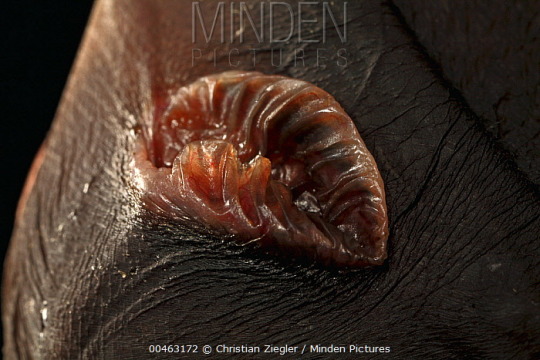
For the most part these are very small bats, with weights as low as three to four grams- one of the smallest, the proboscis bat, can get caught in spiderwebs and eaten.
Aside from roosting in trees, these bats roost in caves, crevices, and occasionally, human-made structures like wells or stone tombs. Because of this, several species are known as tomb bats. They’re pretty adorable little harbingers of death if you ask me.
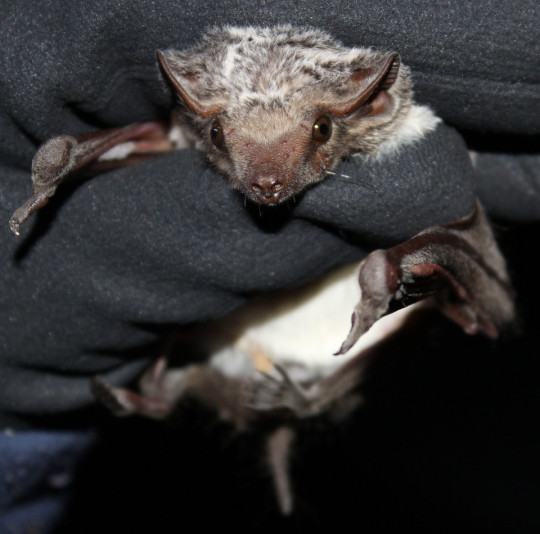
Photo credits:
Main set (species in photo caption): Bat Conservation Intl / Jasmine Vink / University of KwaZulu-Natal / Merlin Tuttle / Michael Penney
Emedded in text: Bateleur Nature Reserve / ARKive / Riley Pearce / PSUNHM / Christian Ziegler
#koryos talks#learning with koryos#long post#sac winged bat#sheath tailed bat#emballonuridae#bat#know your bat#sorry this post is very long i hope the cute boys make up for it
10K notes
·
View notes
Text

@sparklestardesigns i think you have the vibes of the northern ghost bat (Diclidurus albus) from the family Emballonuridae! i love this little guy so much they are the bat ever <3

32 notes
·
View notes
Text

African Sheath-Tailed Bat, photographed by Zarek Cockar, (source)
#African Sheath-Tailed Bat#coleura afra#bat#bats#cute bats#daily bats#bats of africa#bats of asia#batposting#chiroptera#sheath-tailed bat#emballonuridae
54 notes
·
View notes
Photo

🦇Bat Fact! Do you know of the Bare-Rumped Sheathtail Bat (Saccolaimus saccolaimus)? Also known as the Naked-rumped Pouched Bat and the Pouched Tomb Bat, this microbat’s name comes from their backs which have little to not hair below the hips. This bat can be found from Australia to India to Thailand and more! This insectivorous bat has 5 subspecies and roosts in caves, hollow trees, and between rocks. This bat is in the family Emballonuridae, which is composed of some of the smallest bats in the world from 3.5cm to 10cm in size. This bat is listed as “Least Concern” by the IUCN🦇
#batfacts #bats #bat #akhyls #education
📸Photo by A. Compton/Australian Museum📸
⬇️Follow Bat Facts⬇️ https://akhylsthebat.tumblr.com/ https://www.minds.com/akhylsthebat/ https://twitter.com/AkhylsBatFacts https://www.facebook.com/groups/137858924078846/ https://t.me/AkhylsBatFacts Disclaimer: All images used here are for educational purposes and are not used in any way for profit or to promote any products or services. Copyright Disclaimer under section 107 of the Copyright Act 1976, allowance is made for “fair use” for purposes such as criticism, comment, news reporting, teaching, scholarship, education and research. Fair use is a use permitted by copyright statute that might otherwise be infringing
1 note
·
View note
Photo

#murciélagos Casi tres cuartas partes de todas las especies de murciélagos que existen en el mundo se alimentan de insectos y otros invertebrados —los de la familia Emballonuridae, como la especie Balantiopteryx plicata que se localiza en América, son representantes de esto—, otras especies comen frutas y néctar, y unas cuantas más se alimentan de carne (de roedores, lagartijas, aves, peces) —de la subfa- milia Phyllostominae Chrotopterus auritus, por ejemplo— y sangre, aunque únicamente existen tres tipos de éstos últimos —Desmodus rotundus, Diamus youngi, Diphylla ecaudata, quienes pertenecen a la subfamilia Desmodontinae. La forma de las mandíbulas de los murciélagos proporciona indicios sobre los hábitos de alimentación de cada especie; por ejemplo, los que se alimentan preferentemente de insectos tienen mandíbulas fuertes y de tamaño moderado, equipadas con casi todo el complemento de dientes (Wilson, 1997). En cambio, los murciélagos que se alimentan de néctar y polen poseen rostros alargados que pueden introducir fácilmente en los receptáculos florales para alcanzar los nectarios, y sus mandíbulas están provistas de pocos dientes de pequeño tamaño. Los frugívoros tienen hocico corto y ancho, con una mandíbula fuerte, provista de dientes caninos relativamente grandes. Los carnívoros tienen mandíbulas fuertes, con dientes caninos bien desarrollados. Pintura realizaba para el mes de los Murciélagos, por la @coesbio.morelos, que fue expuesta en el Museo Morelense de Arte Contemporáneo Juan Soriano. #mamíferos #oleo #pintura #biología #biology #datosinteresantes #datoscuriosos #morelos #artecientífico #naturaleza https://www.instagram.com/p/CXFtvnrrDm4/?utm_medium=tumblr
#murciélagos#mamíferos#oleo#pintura#biología#biology#datosinteresantes#datoscuriosos#morelos#artecientífico#naturaleza
1 note
·
View note
Photo

The naked-rumped tomb bat (Taphozous nudiventris) is a species of sac-winged bat in the family Emballonuridae. Found in northern Africa, the Middle East, and southeastern Asia, its natural habitats are dry savanna, subtropical or tropical dry shrubland and forests, caves, and arid areas.
https://en.wikipedia.org/wiki/Naked-rumped_tomb_bat
0 notes
Photo

Rehab. The yellow-bellied sheath-tailed bat, also known as the yellow-bellied sheathtail or yellow-bellied pouched bat, is a #microbat of the family #Emballonuridae. . a very distinctive, large, insectivorous bat up to 87 mm long. It has long, narrow wings, a glossy, jet-black back, and a white to yellow belly extending to the shoulders and just behind the ear. . it has a flattened head and a sharply-pointed muzzle. The tail is covered with an extremely elastic sheath that allows variation in the tail-membrane area. . found across northern and eastern Australia. In the most southerly part of its range - most of Victoria, south-western NSW and adjacent South Australia. . Roosts singly or in groups of up to six, in tree hollows and buildings; in treeless areas they are known to utilise mammal burrows. When foraging for insects, flies high and fast over the forest canopy, but lower in more open country. Forages in most habitats across its very wide range, with and without trees; appears to defend an aerial territory. Breeding has been recorded from December to mid-March, when a single young is born. . 🐾 #lovethemorloosethem #notouchnorisk
2 notes
·
View notes
Note
where do vampire bats come from?
The only real answer is "Wikipedia," because I am a dork.
The Family Batidae contains around 1,700 species, divided into six genera: the Megabats (including the genera Horseshoe vampire bat, Hairy-legged vampire bat and Least echolocating Vampire bat, the Anteaters (genera Hairy-legged anteater, True anteater and Anepomene), False vampire (Pallipedia), False vampire bat, and Petauristidae (mostly containing bats of the genera Petauristini, Cynopterus and Rousettus). Most of these bat species feed exclusively on insects (insectivorous bats), but they range from insectivores to bloodsuckers. All of the species in the second half of the family Pteropodidae, which are found in many parts of the world, prey on both insects (most species) and rodents (a few species). Most Rhinolophidae bats are also insectivorous; the exception is Rhinopoma hypinum, with a diet of small mammals. All members of Soricidae (known as Old World nocturnal bats) are nocturnal, usually flying at night, and eat mostly fruit. The only Pteromyzetidae (commonly called Hairy-eared bats) are insectivorous bats found only in Africa. All members of Emballonuridae (bats of Southeast Asia and Australia) are nocturnal fruit eaters that are sometimes called "fruit-eating bats," even though they do eat fruit sometimes.
The remainder of the family Molossidae are exclusively insectivorous (including all species in the genera Aerodactylus, Choeropus and Cynopterus, and a single species in the genus Eidolon). There are also two species in the genus Cynocephalus, whose name means "dog-headed," because they are the size and shape of a dog. They are insectivorous, but usually eat beetles as well as various other insects. There is only one other bat of the family Molossidae, the so-called spotted spinner. Its range includes many parts of Africa and Asia. It is often referred to in English as the "flying fox."
3 notes
·
View notes